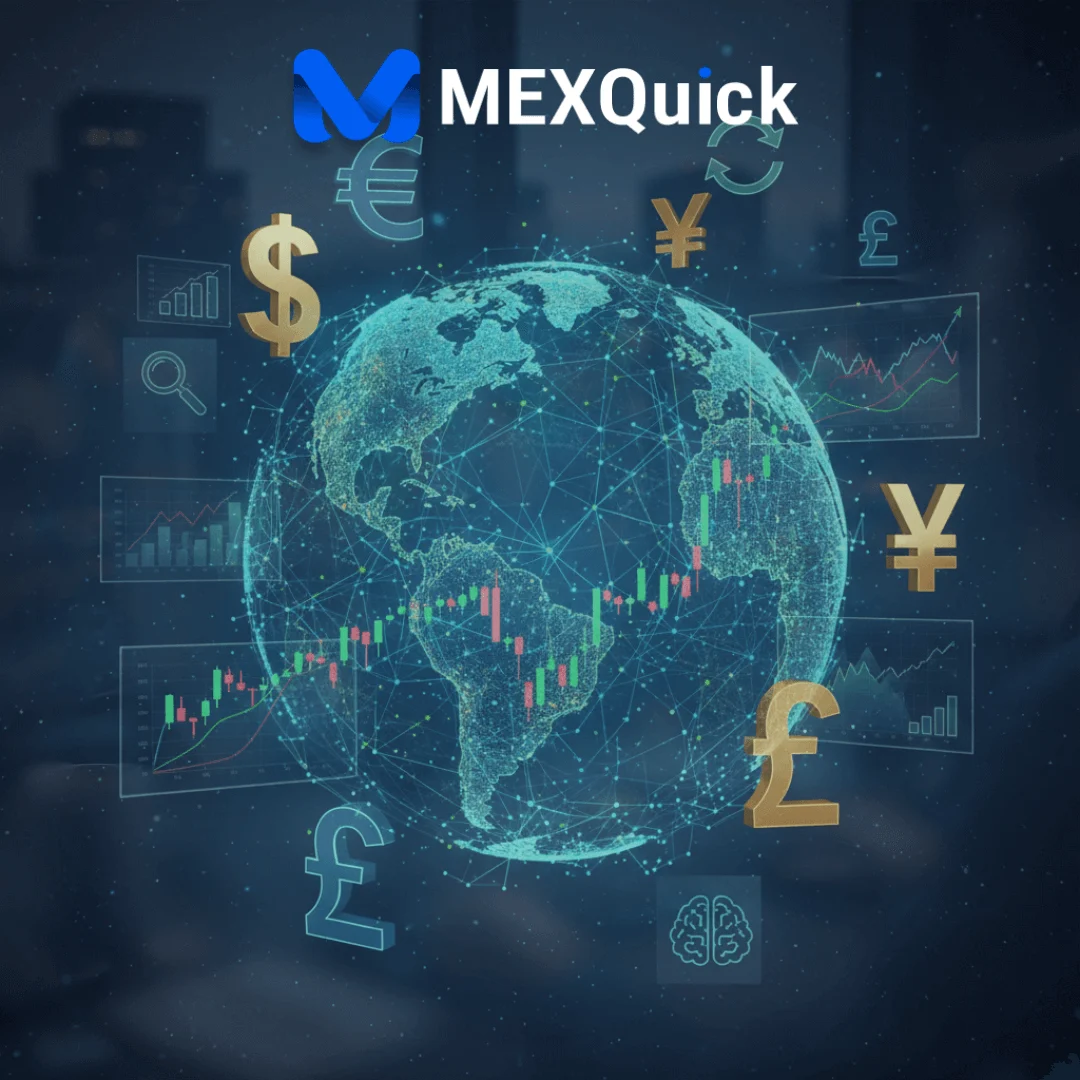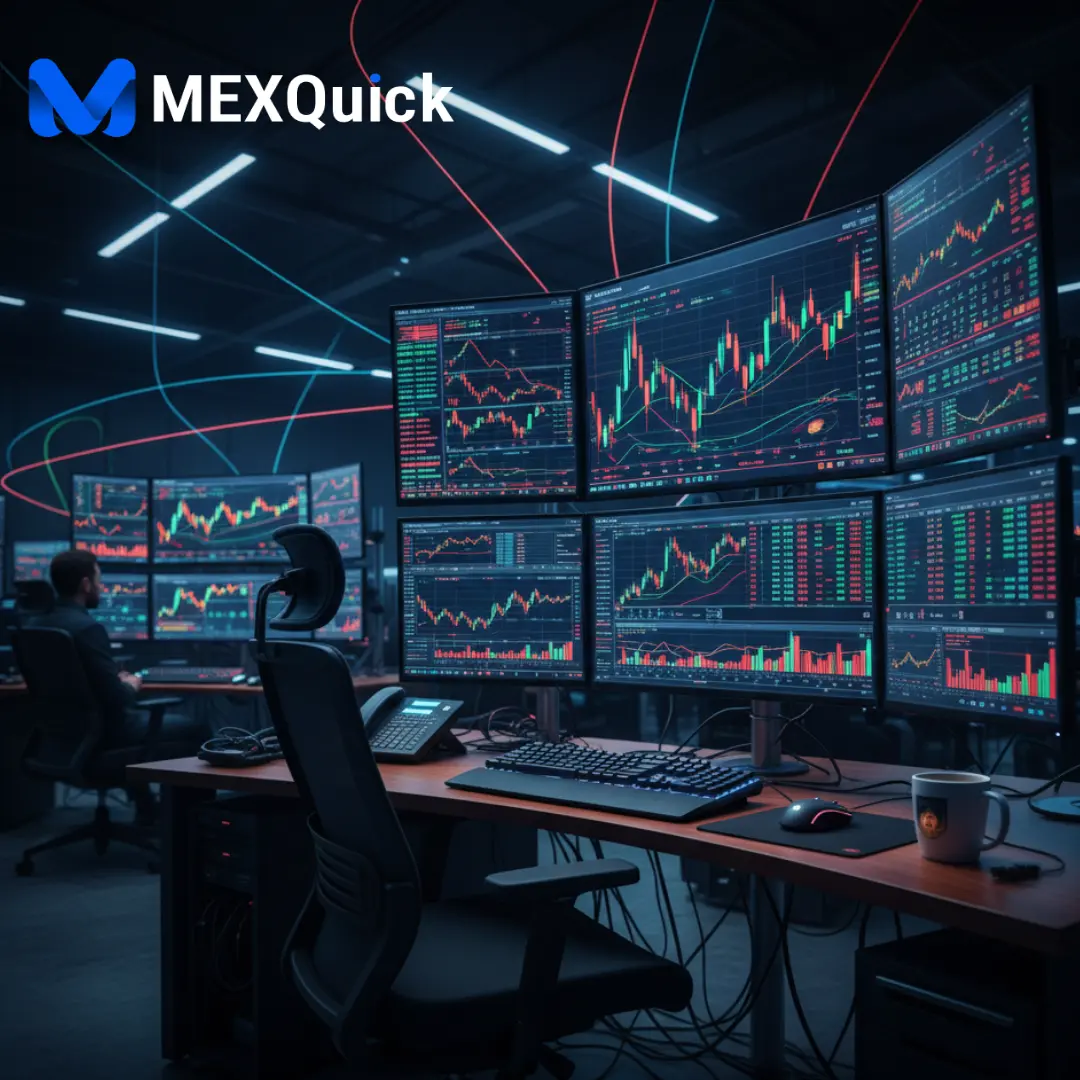Forex trading, often seen as complex, is actually the largest and most liquid financial market in the world. It’s an opportunity for individuals to participate in the global exchange of currencies. This guide will break down what forex trading is, how it works, if you can trade, and the steps to start your online trading journey with a platform like MEXQuick.
What is Forex Trading and How Does it Work?
Forex trading, short for Foreign Exchange (FX), is the act of simultaneously buying one currency while selling another. The primary goal is to profit from the fluctuations in the exchange rates between currencies.
How it Works: Trading in Pairs
Currencies are always traded in pairs, as the value of one is always measured relative to another. For example, in the EUR/USD pair:
- The first currency, EUR (Euro), is the Base Currency.
- The second currency, USD (US Dollar), is the Quote Currency.
The price of EUR/USD tells you how many US Dollars it takes to buy one Euro.
- Going Long (Buying): You buy a currency pair (e.g., EUR/USD) if you expect the base currency (EUR) to strengthen relative to the quote currency (USD).
- Going Short (Selling): You sell a currency pair if you expect the base currency (EUR) to weaken relative to the quote currency (USD).
The difference between the buying price (Ask) and the selling price (Bid) is called the Spread, which is essentially the broker’s commission on the trade.
Key Concepts in Forex
- Leverage: This allows you to control a large trading position with a small amount of capital (a deposit called margin). For instance, with 50:1 leverage, a $1,000 deposit lets you control a position worth up to $50,000. While leverage can amplify profits, it also significantly amplifies losses.
- Pips (Point in Percentage): This is a small measure of the change in a currency pair’s exchange rate. For most pairs, a pip is a one-digit movement in the fourth decimal place.
Can Anyone Trade Forex Online?
Yes, almost anyone can trade forex online, provided they meet the regulatory and legal requirements of their country and the broker they choose.
The barrier to entry for individual traders has significantly lowered due to online trading platforms. You don’t need a massive amount of capital to start, as many brokers allow you to open accounts with relatively small deposits and offer demo accounts.
Essential Requirements for Online Trading:
- A Regulated Broker: You must open a trading account with a reputable, regulated online forex broker.
- Sufficient Capital: You need money to fund your live trading account, although the minimum deposit is often low.
- Knowledge: You need to learn the basics, market dynamics, risk management, and develop a trading plan. For a foundational understanding of market analysis, you might find our guide on “How to Learn Crypto Trading in 2025 – A Complete Beginner’s Guide” useful, as many principles apply across different markets.
- Legal Compliance: Always ensure that online forex trading is permitted in your jurisdiction and that your broker and the currency pairs you trade are compliant with local financial regulations.
How to Start Trading Forex Online
Starting your online forex trading journey is a structured process that emphasizes education and risk management.
7 Steps to Begin Online Forex Trading
- Educate Yourself: Learn the fundamental and technical analysis methods used to forecast price movements. Understand terms like pips, leverage, margin, and risk management techniques. For example, understanding chart patterns like the “W Pattern in Crypto Trading” can be highly beneficial for identifying potential reversals in any volatile market, including forex.
- Choose a Reliable Online Broker: Select a broker that is well-regulated, offers a user-friendly platform, and provides competitive spreads and fees. For instance, a platform like MEXQuick offers a unique trading environment with innovative features like its Rhythm Contracts and a transparent pricing model.
- Open and Set Up a Trading Account: This process typically involves a basic application and identity verification (KYC).
- Start with a Demo Account: Before committing real money, use a demo account to practice trading with virtual funds. This is a critical step to test your strategies and get comfortable with the broker’s platform without financial risk. MEXQuick, for example, often provides prediction credits or demo opportunities to new users to experience the platform risk-free.
- Develop a Trading Plan: Define your financial goals, risk tolerance, preferred trading strategies, and how much you’re willing to risk per trade. Stick to this plan religiously.
- Fund Your Account and Execute Trades: Once you’re confident with your demo trading, fund your live account. Use your analysis to decide whether to buy (go long) or sell (go short) a currency pair. Always use risk management tools like stop-loss orders to limit potential losses.
- Monitor, Review, and Adjust: Keep a trading journal to track your progress. Analyze what went well and what didn’t to continuously refine your strategy and grow as a trader.
Getting Started with MEXQuick
For beginners looking for an accessible and innovative platform, a modern broker like MEXQuick can provide a good entry point.
MEXQuick is known for its next-generation predictive trading platform that focuses on transparency. For new users, they often make the learning process engaging through unique initiatives. For example, some of their campaigns offer new users prediction credits to participate in short-term market predictions without a deposit, allowing you to earn points that can be redeemed for prizes. This gamified approach combines learning with tangible rewards, making the initial experience accessible and fun.
Look for a platform like MEXQuick that offers:
- Transparent Pricing: Ensuring you have fair market conditions and accurate price discovery.
- Intuitive Platform: A user-friendly design to make execution seamless. You can learn more about our offerings and innovative approach on our dedicated page: “MEXQuick Trading Platform”.
- Demo/Practice Tools: Opportunities to trade with virtual funds or prediction credits to build your confidence risk-free.
No matter which broker you choose, remember that successful forex trading requires dedication, continuous learning, and disciplined risk management. Start small, use your demo account wisely, and prioritize protecting your capital.


